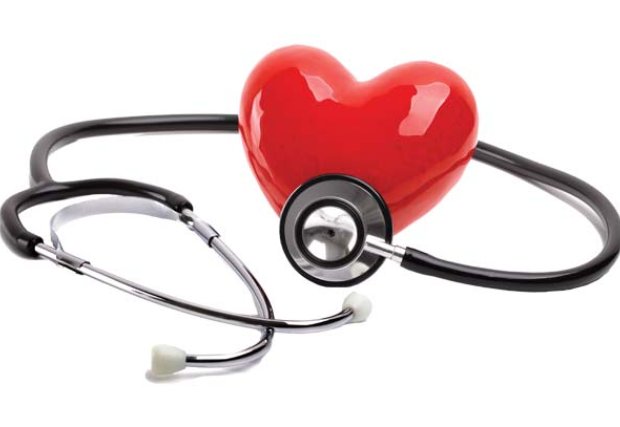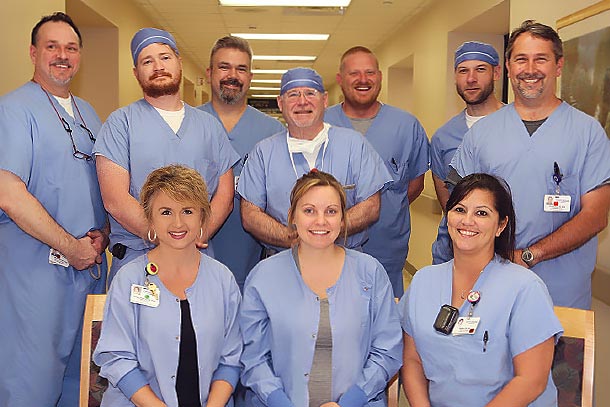The cardiac catheterization lab's team is comprised of interventional cardiologists, nurses and cardiovascular technologists. Lisa Davis, RT, CV, Director, Radiology and Cardiovascular Services at Aiken Regional, and says they treated 3,447 patients last year.
“We perform angiograms which help diagnose heart conditions and detect blockages. If a blockage is found, cardiologists can determine the best way to treat it,” says Lisa. One way is to do an angioplasty, which uses a catheter to open a coronary artery narrowed by plaque buildup. The catheter’s balloon tip is inflated and presses the plaque against the artery wall, restoring blood flow. “Sometimes we use a catheter-based ultrasound to see the blockage and determine what type of stent to use,” she says. Carotid arteries can also be repaired using stents. If a stent won’t improve the outcome, the patient may need to have surgery or a bypass.
Top row, left to right: DJ Waterman, CV Tech; Micah James, RN; Alex Wood, CV Tech; David Cook, CV Tech, Supervisor; Josh Waters, CV Tech; Jeremy Stearns, RN, Supervisor; Bruce Key, RN. Bottom row, left to right: Susan Kneece, RN; Brittany Bearden, RN; Heather Gill, RN.
Another minimally invasive procedure done in the cath lab is abdominal aortic aneurysm repair. An aneurysm is a weak spot in the aorta that bulges. If it is not repaired, there is a risk of rupture. “Minimally invasive options such as this can mean a quicker recovery and shorter hospital stay,” says Supervisor David Cook, CVT. “Studies can be also done for patients with peripheral artery disease (PAD), which is the narrowing of the arteries to the legs, stomach, arms and head.”
“We also insert pacemakers, defibrillators and implantable holter monitors,” says Lisa. “Most patients go home the day of their procedure.” Supervisor Jeremy Stearns, RN, says their team is very hands-on. “In emergency situations, our on-call team is here within 30 minutes, ready to save lives. It’s a great feeling to know how much of a difference we can make working together.”


